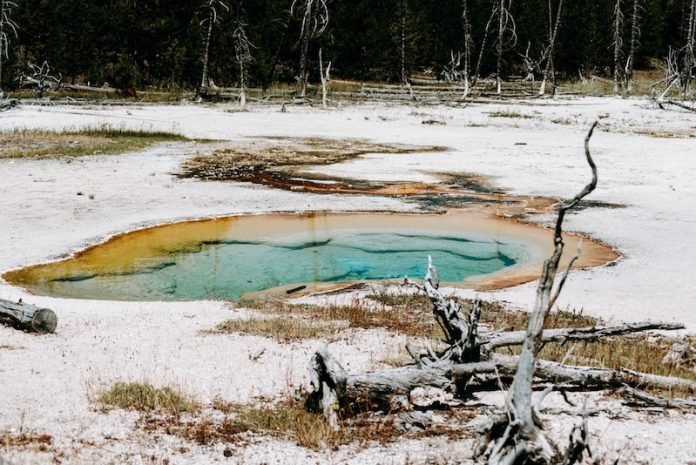
A new study suggests that increasing global temperatures and projected drying in the American West may slow down or even halt the eruptions of Yellowstone National Park’s famous geysers.
The study, led by hydrologist Shaul Hurwitz from the United States Geological Survey (USGS), highlights that even minor changes in precipitation could affect the frequency of geyser eruptions.
Geysers require specific conditions to form, including a water source, heat supply, and the appropriate geological plumbing.
Environmental conditions such as drought can disrupt this balance, leading to the geysers becoming dormant.
The researchers used partially mineralized wood by Steamboat Geyser, the world’s tallest active geyser, to examine its previous inactive periods and identify the causes of these dry spells.
Steamboat Geyser’s heated water spray, which is rich in silica, covers nearby trees when it erupts. The silica prevents decomposition, resulting in the preservation of the trees’ structure for centuries.
The researchers took advantage of this natural preservation process, collected the silicified wood samples, and used radiocarbon dating to identify three periods of tree growth around the geyser—late 15th century, mid-17th century, and late 18th century.
These periods corresponded with regional climate records of droughts, suggesting that a reduced water supply caused the geyser’s inactivity.
Given current predictions of rising global temperatures, long-term drought in the Western U.S. could further decrease the activity of Yellowstone’s geysers.
Hurwitz suggested that popular geysers like Old Faithful could become less reliable with their eruptions as their water supply dwindles.
Such changes in geyser activity could have substantial implications for how Yellowstone National Park manages its overall visitor experience.
The study was published in Geosystems.
Follow us on Twitter for more articles about this topic.
Source: American Geophysical Union



